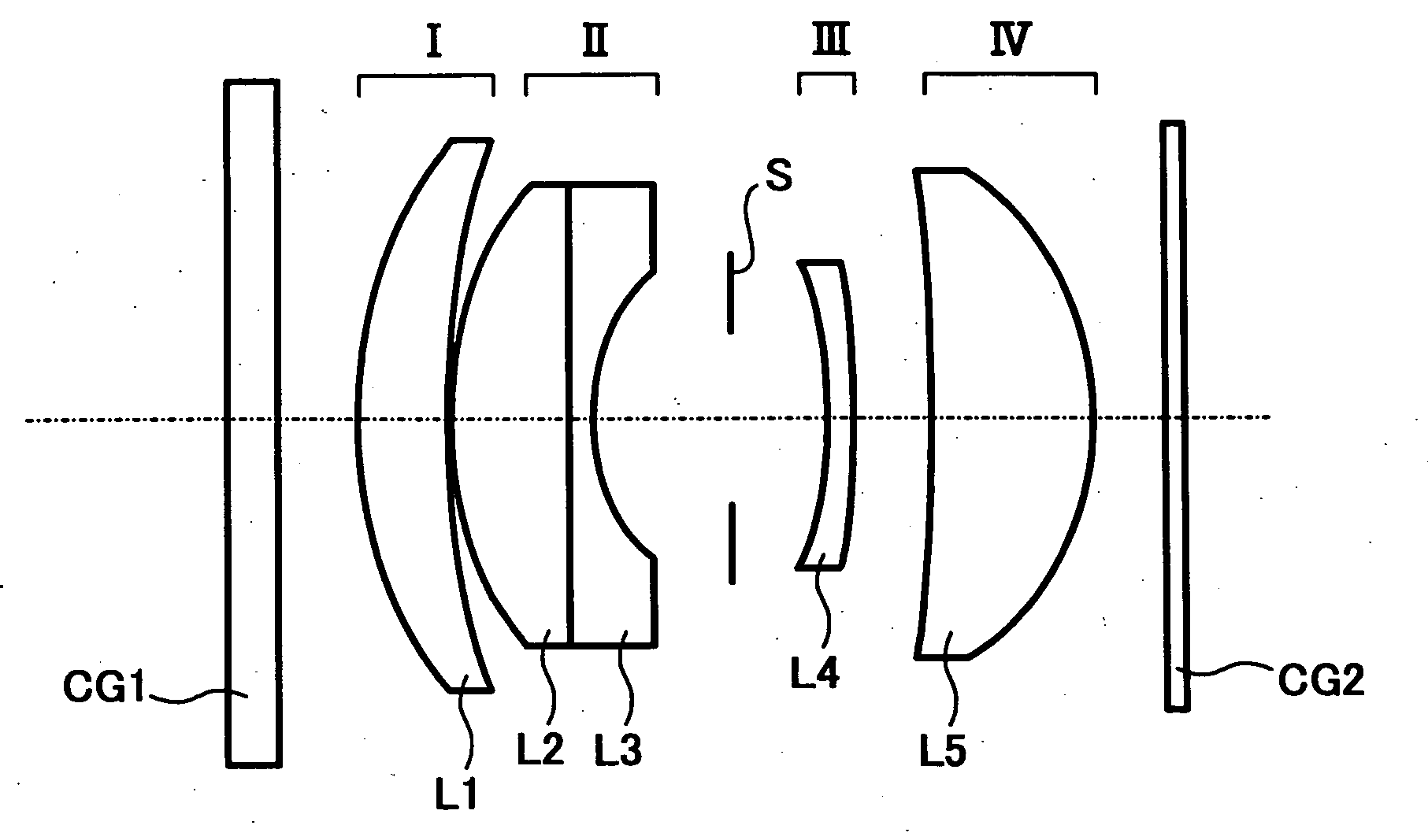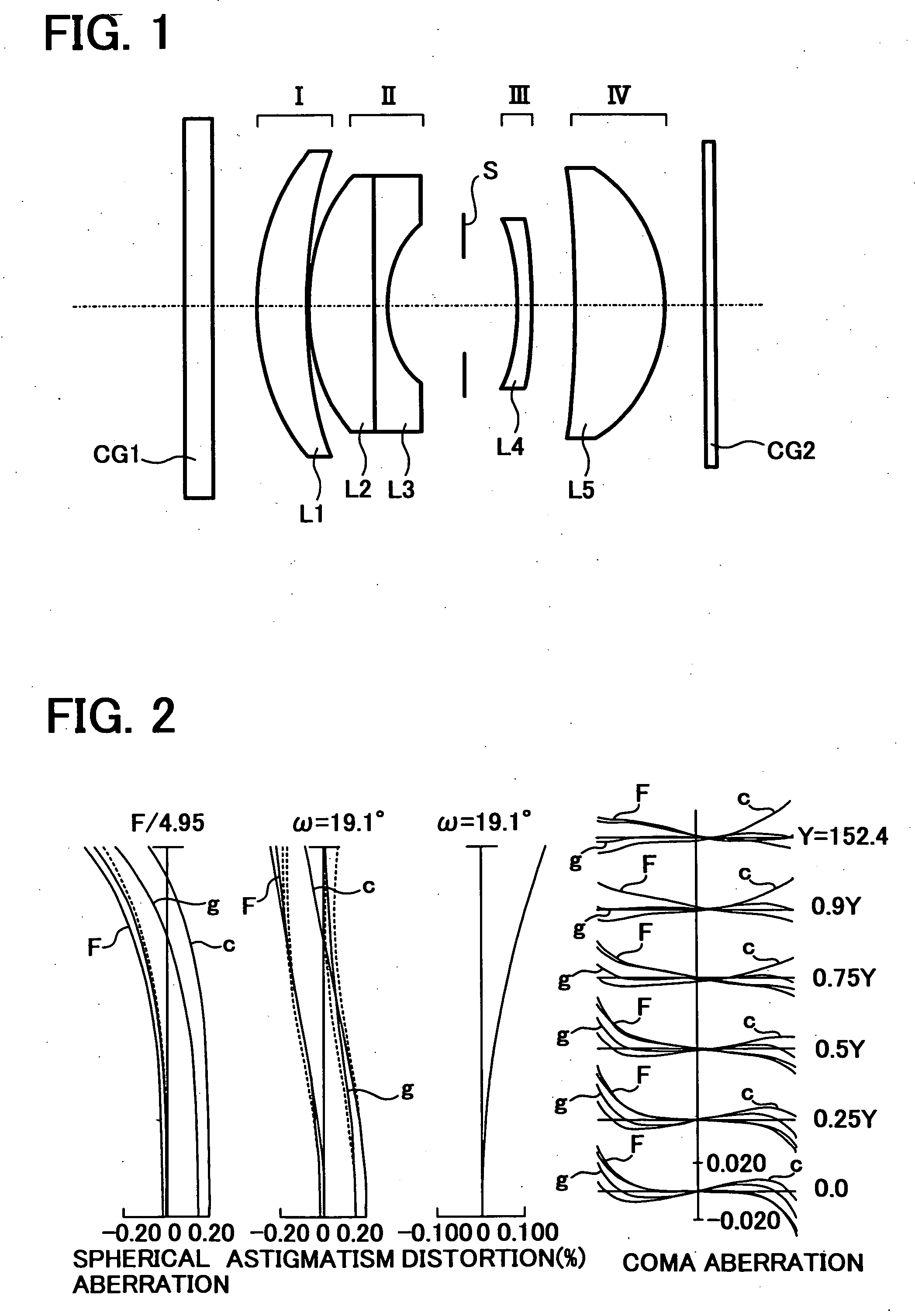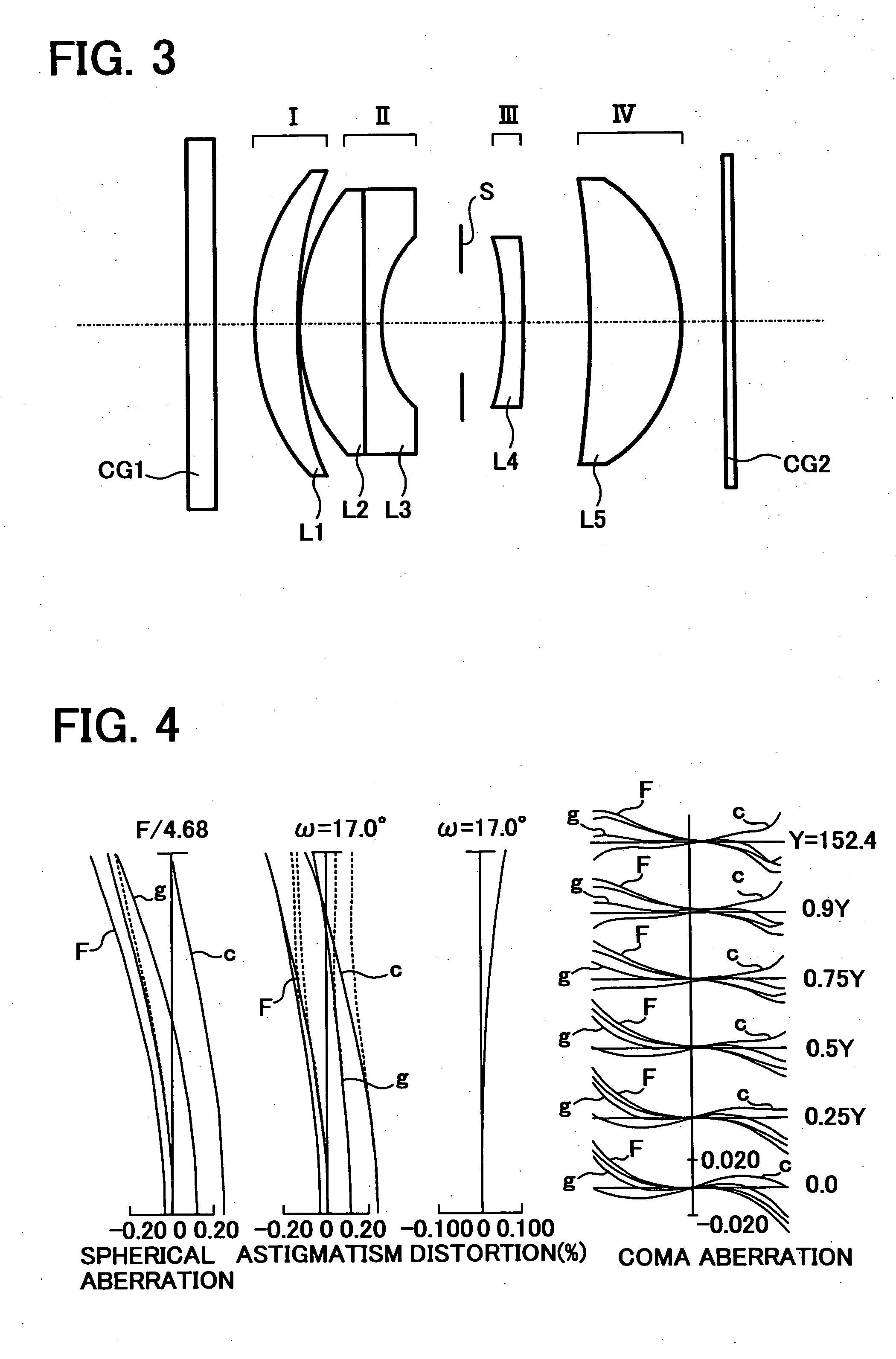Original reading lens, original reading lens unit, original reading device, and image forming device
a reading lens and reading lens technology, applied in optics, instruments, electrical appliances, etc., can solve the problems of white turbidity (so-called tarnish) on the lens surface, the difficulty of preferably correcting the chromatic aberration of the axis, and the difficulty of downsizing the color image reading lens, etc., to achieve small and low-cost
- Summary
- Abstract
- Description
- Claims
- Application Information
AI Technical Summary
Benefits of technology
Problems solved by technology
Method used
Image
Examples
embodiment 1
[0133] f=84.285, F=4.95, m=0.23622, Y=152.4, ω=19.1°
[0134] The data of the first embodiment is shown in Table 1. O shown in the material name box represents the name of the producer, OHARA, and H represents HOYA.
TABLE 1RDNdνdneNgNFnCMaterial nameC1∞3.2001.5163364.11.518251.526211.521911.51386SBSL7 (O)C2∞ 129.6675.7771.7130053.941.716151.729391.722201.70898LAC8 (H) 258.0750.100 323.9517.7191.7234237.991.727931.747931.736851.71781BAFD8 (H) 43743.4171.5001.6727032.171.677641.699991.687521.66661EFD5 (H) 512.9178.853 6∞5.980 7−29.4791.5001.6889331.161.694161.717861.704621.68251EFD8 (H) 8−55.5855.280 9−128.28410.0001.4874970.441.489141.495941.492271.48535FC5 (H)10−19.790C3∞1.0001.5163364.11.518251.526211.521911.51386SBSL7 (O)C4∞
[0135] Table 2 represents the aspherical coefficients.
TABLE 2Plain numberKA4A6A8A108−8.352535.89609E−061.95474E−08−4.66956E−111.51034E−13
[0136] Table 3 represents δθ gfi (i=1 to 5) of the partial dispersion deviation of each lens and parameter value of conditio...
second embodiment
[0139] f=90.289, F=4.68, m=0.23622, Y=152.4, ω=17.9°
[0140] Table 4 shows the data of the second embodiment by following the first embodiment.
TABLE 4rdNdνdnengnFNCMaterial nameC1∞3.2001.5163364.11.518251.526211.521911.51386SBSL7 (O)C2∞ 128.2255.2901.7130053.941.716151.729391.722201.70898LAC8 (H) 254.0950.100 325.7307.7401.7234237.991.727931.747931.736851.71781BAFD8 (H) 40.0001.8001.6727032.171.677641.699991.687521.66661EFD5 (H) 514.1159.870 6∞5.290 7−40.7352.3701.6889331.081.694171.717931.704661.68249LTIM28 (O) 8−124.3907.940 9−111.88710.6701.4874970.441.489141.495941.492271.48535FC5 (H)10−21.225C3∞1.0001.5163364.11.518251.526211.521911.51386SBSL7 (O)C4∞
[0141] Table 5 shows the aspherical coefficients.
TABLE 5Plain numberKA4A6A8A10710.03581.68617E−063.08889E−08−1.82958E−122.65356E−12
[0142] Table 6 represents δθ gfi (i=1 to 5) of the partial dispersion deviation of each lens and the parameter value of the condition (1).
TABLE 6δθ gd() −δθ gd 1δθ gd 2δθ gd 3δθ gd 4δθ gd 5δθ gd()δθ ...
third embodiment
[0145] f=70.530, F=4.50, m=0.16535, Y=152.4, ω=17.0°
[0146] Table 7 shows the data of the third embodiment by following the first embodiment.
TABLE 7RdndνdNeNgnFnCMaterial nameC1∞3.2001.5163364.11.518251.526211.521911.51386SBSL7 (O)C2∞ 127.4213.5301.7130053.941.716151.729391.722201.70898LAC8 (H) 257.2890.100 320.1776.0981.7234237.991.727931.747931.736851.71781BAFD8 (H) 4−529.8712.3791.6727032.171.677641.699991.687521.66661EFD5 (H) 511.1677.489 6∞5.192 7−29.0794.1041.6889331.161.694161.717861.704621.68251EFD8 (H) 8−69.8395.034 9−249.5237.5001.4874970.441.489141.495941.492271.48535FC5 (H)10−18.375C3∞1.0001.5163364.11.518251.526211.521911.51386SBSL7 (O)C4∞
[0147] Table 8 shows the aspherical coefficients.
TABLE 8Plain numberKA4A6A8A108−8.08831.02524E−054.83573E−08−4.51561E−102.09909E−12
[0148] Table 9 shows δθ gfi (i=1 to 5) of the partial dispersion deviation of each lens and the parameter value of the condition (1).
TABLE 9δθ gd() −Δθ gd 1δθ gd 2δθ gd 3δθ gd 4δθ gd 5δθ gd()δθ gd()δθ ...
PUM
 Login to View More
Login to View More Abstract
Description
Claims
Application Information
 Login to View More
Login to View More - R&D
- Intellectual Property
- Life Sciences
- Materials
- Tech Scout
- Unparalleled Data Quality
- Higher Quality Content
- 60% Fewer Hallucinations
Browse by: Latest US Patents, China's latest patents, Technical Efficacy Thesaurus, Application Domain, Technology Topic, Popular Technical Reports.
© 2025 PatSnap. All rights reserved.Legal|Privacy policy|Modern Slavery Act Transparency Statement|Sitemap|About US| Contact US: help@patsnap.com



